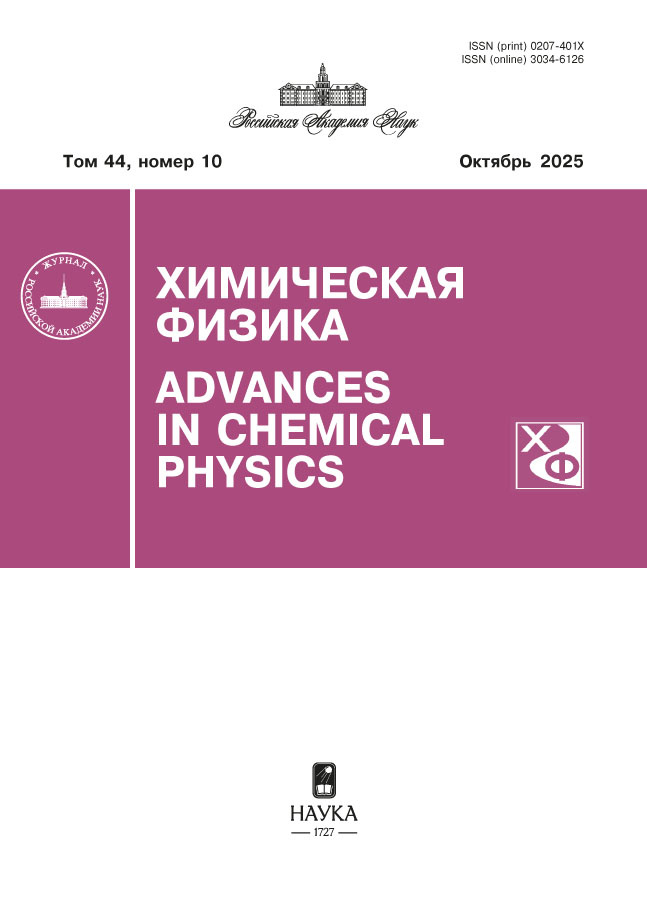Определение содержания кофактора FAD и NAD(P)H-оксидазных комплексов в спленоцитах мышей и клетках карциномы Льюис при апоптозе методом конфокальной микроскопии
- Авторы: Миль Е.М.1, Албантова А.А.1, Матиенко Л.И.1, Голощапов А.Н.1, Коровин М.А.1, Кувыркова В.В.1
-
Учреждения:
- Институт биохимической физики им. Н.М. Эмануэля Российской академии наук
- Выпуск: Том 43, № 11 (2024)
- Страницы: 47-53
- Раздел: Химическая физика биологических процессов
- URL: https://cardiosomatics.orscience.ru/0207-401X/article/view/680977
- DOI: https://doi.org/10.31857/S0207401X24110061
- ID: 680977
Цитировать
Полный текст
Аннотация
В настоящей работе исследовано содержание кофактора FAD и ферментных NAD(P)H-оксидазных комплексов методами флуоресцентной и конфокальной микроскопии (с флуорофорами Annexin V–FITC, 7-AAD (7-Aminoactinomycin D), EtBr) при апоптозе, вызванном анфеном натрия в сочетании с пероксидом водорода в спленоцитах здоровых мышей и в опухолевых клетках карциномы Льюис. Применение этих методов дает возможность наблюдать и количественно оценить апоптотический эффект анфена натрия и пероксида водорода, а также позволяет визуализировать метаболитические изменения в клетке, усиление флуоросценции FAD в опухолевых клетках и NAD(P)H-оксидазных комплексов в спленоцитах. Полученные данные свидетельствуют о возможности применения анфена натрия в сочетании с пероксидом водорода в качестве противоопухолевого препарата, действующего на определенные типы клеток.
Ключевые слова
Полный текст
Об авторах
Е. М. Миль
Институт биохимической физики им. Н.М. Эмануэля Российской академии наук
Email: albantovaaa@mail.ru
Россия, Москва
А. А. Албантова
Институт биохимической физики им. Н.М. Эмануэля Российской академии наук
Автор, ответственный за переписку.
Email: albantovaaa@mail.ru
Россия, Москва
Л. И. Матиенко
Институт биохимической физики им. Н.М. Эмануэля Российской академии наук
Email: albantovaaa@mail.ru
Россия, Москва
А. Н. Голощапов
Институт биохимической физики им. Н.М. Эмануэля Российской академии наук
Email: albantovaaa@mail.ru
Россия, Москва
М. А. Коровин
Институт биохимической физики им. Н.М. Эмануэля Российской академии наук
Email: albantovaaa@mail.ru
Россия, Москва
В. В. Кувыркова
Институт биохимической физики им. Н.М. Эмануэля Российской академии наук
Email: albantovaaa@mail.ru
Россия, Москва
Список литературы
- Beloborodova N.V. // General Reanimatology. 2019. V. 15. № 6. P. 62; doi::10.15360/1813-9779-2019-6-62-79
- Binyukov V.I., Mil E.M., Matienko L.I., Albantova A.A., Goloshchapov A.N. // Micro (MDPI). 2023. V. 3. № 2. P. 382; htpp//doi.org/10.3390/micro3020026
- Матиенко Л.И., Миль Е.М., Бинюков В.И. // Хим. физика. 2020. Т. 39. № 6. С. 87; doi: 10.31857/S0207401X20060084
- Mcintosh J.R. // J. Cell Biol. 2001. V. 153. No 6. P.25; doi: 10.1083/jcb.153.6.f25
- Захаров Н.С., Попова А.Н., Захаров Ю.А., Пугачёв В.М., Руссаков Д.М. // Хим. физика. 2022. Т. 41. № 7. С. 84; doi: 10.31857/S0207401X22070172
- Ткачук В.А., Тюрин-Кузьмин П.А., Белоусов В.В., Воротников А.В. // Биол. мембраны. 2012. Т. 29. № 1–2. С. 21.
- Русина И.Ф., Вепринцев Т.Л., Васильев Р.Ф. // Хим. физика. 2022. Т.41. № 2. С. 12; http://doi.org/10.31857/S0207401X22020108
- Герасимов Н.Ю., Неврова О.В., Жигачева И.В., Генерозова И.П..Голощапов А.Н. // Хим. физика. 2023. Т. 42. № 1. С. 22; doi: 10.31857/S0207401X23010041
- Садыков Р.А., Хурсан С.Л., Суханов А.А., Кучин А.В. // Хим. физика. 2023. T. 42. № 12. С. 3; doi: 10.31857/S0207401X23120099
- Миль Е.М., Бинюков В.И., Ерохин В.Н., Албантова А.А., Володькин А.А., Голощапов А.Н. // Цитология. 2020. Т. 62. № 7. С. 503; doi: 10.31857/S0041377120070032
- Ерохин В.Н., Кременцова А.В., Семенов В.А., Бурлакова Е.Б. // Изв. АН. Сер. биол. 2020. № 5. C. 583.
- Миль Е.М., Бинюков В.И., Ерохин В.Н. // Докл. АН. 2018. Т. 482. № 5. С. 598.
- Becker W. // J. Microsc. 2012. V. 247. No 2. P. 119; doi: 10.1111/j.1365-2818.2012.03618.x
- Druzkova I.N., Shirmanova M.V., Lukina M.M. et al. // Cell Cycle. 2016. V. 15. № 9. P. 1257; doi: 10.1080/15384101.2016.1160974
- Alen L-A.H. // Methods Molec. Biol. 2007. V. 412. P. 273; doi::10.1007/978-1-59745-467-4_18
- Rokutan K., Kawahara T., Kuwano Y. et al. // Antioxidants Redox Signaling. 2006. V. 8. № 9–10. P. 1573; doi::10.1089/ars.2006.8.1573
- Ma M.W., Wang J., Zhang Q. et al. // Mol. Neurodegeneration. 2017. № 12. P. 7; https://doi.org/10.1186/s13024-017-0150-7
- Lukina M. M., Dudenkova V. V., Ignatova N. I. et al. // Biochim. Biophys. Acta – Genetic Subj. 2018. V. 1862. № 8. P. 1693; doi: 10.1016/j.bbagen.2018.04.021
- Babkina А.S. // General Reanimatology. 2019. V. 15. № 6. P. 50; https://doi.org/10.15360/1813-9779-2019-6-50-61
- Vermot A., Petit-Härtlein I., Smith S.M.E., Fieschi F. // Antioxidants (Basel) 2021. V. 10. № 6: P. 890; doi: 10.3390/antiox10060890
- Bedard K., Krause K.H. // Physiol. Rev. 2007. V. 87. № 1. P. 245; doi::10.1152/physrev.00044.20
Дополнительные файлы
















